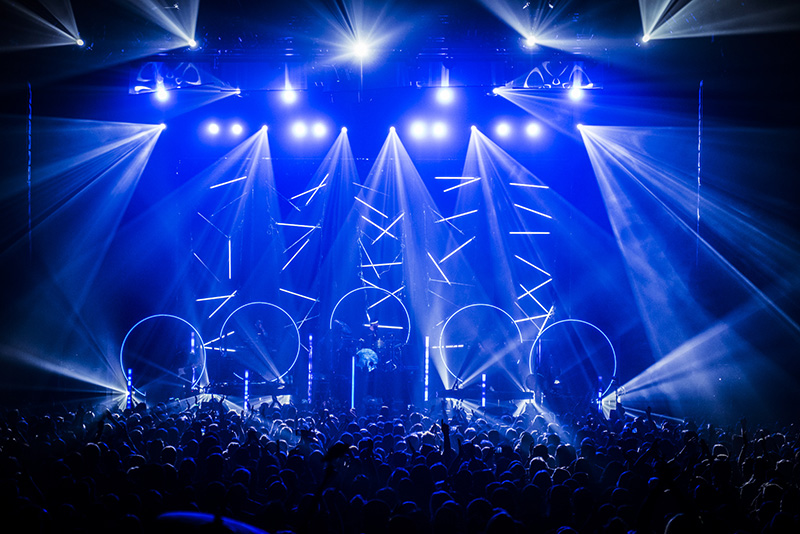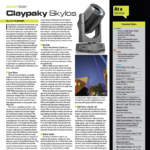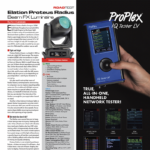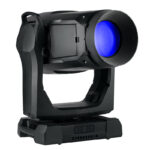
There’s a reason that Madrix 5 was just awarded a PLSN Gold Star Award for Best Pixel Management Software for 2018, and I just learned why. Using Madrix 5 is like playing a really simple game with pixels and video, in the form of a media server that creates content, all while performing under the hood like the Lockheed SR-71 Blackbird stealth aircraft. It’s ridiculously fast; it can handle thousands of universes of data; and whether you’re interfacing the software from a server computer, laptop, or lighting console, it’s so simple to get accustomed to the software that it is literally as fun as playing a game that has the guts to take on A-market video production.
Madrix 5 is used all over our industry: in major scale architectural environmental ambiance lighting (look up the Hotel Pullman in Berlin, Germany, or the Granada Luxury Belek Hotel on the Mediterranean coast in Turkey), on major network events, and this year Madrix 5 was the pixel pusher of choice for the 2018 PyeongChang Winter Olympic Games in South Korea. Madrix 5 is a production heavy in the world of video and pixels.
It sounds so crazy to call a media server a “fun game,” but I literally had fun with Madrix 5 because of how simple and powerful it is to jump in and create something from nothing, with nearly no knowledge of the product. I went into this review completely blind to Madrix 5, and I came out of it one hour after learning the software by myself, and seven hours after I stopped making complex matrices of video, pixels, dimensional pixel art, and cue stacks of completely unique, easy to manipulate, and simple to play back works of LED mapped art. I feel confident enough after a half-day session with Madrix 5 to build a full production, with hundreds of universes and thousands of feet of pixels, and take it on the road. Madrix 5 is completely insane with respect to just how confident you become in using the interface and relying on the software’s incredible power and prowess.

Flexibility
Madrix 5 is ultimately scalable, from small pixel panel projects to full-scale video production. You truly get the best workout of your LEDs with this software suite. I was frankly shocked at the quantity of skills the software holds, and how quickly it migrates from one task to another. Madrix 5 is an LED lighting controller, a 2D pixel mapper, or a 3D voxel mapper — the term “voxel” refers to a pixel in a three-dimensional arrangements of pixels, like a grid of LED tubes or any kind of 3D arrangement that can be created — volume mapping. So, Madrix 5 obviously does 3D mapping. It’s also a VJ suite, a media server, and a content creator — a feature that I find the most humbling, due to how quickly you can make content that looks good and plays back smoothly.
Starting from Scratch
When you get your Madrix 5 package, which is well-designed and professional, your first order of business is to install the software from the provided USB dongle; a few seconds after the package installs, you’re prompted to insert the USB security key, which takes you to the key registration page. Enter in your receipt ticket number, and we’re off to the races, as Lana Del Rey says so well.
But that’s it, really — you’re now ready to start patching, programming, and making pixels do your bidding. Install and registration took me all of about 81 seconds. It’s truly a software kit that has been considered down to the minute detail.
My machine for running Madrix 5 is no slouch, but it’s not the fastest thing on the market right now either — I’m running a Sager P770DM, 64-bit Windows laptop with the Intel i7-6700K chip at 4.00GHz, with 32 gigs of RAM. Madrix 5 is built to thrive in the 64-bit environment, so it is literally blazing fast with playback and previews of video clips and created content.

Patching
Adding your video surfaces in Madrix 5 is fast and simple, accessible by clicking on the Patch Editor in the Preferences menu — two clicks and you’re there. Via this menu, you can completely format the pixel rig as you want it to appear: add generic pixels, choose from the thousands of pre-created industry fixture choices, build 2D pixel maps and 3D voxel maps, among dozens of other functions you need when patching. Also, you don’t have to make a choice between a 2D world and a 3D world. Both can be patched in the interface together to really twist your designs into magic.
One of my favorite features of the Patching Editor is the addition of a Background Image, which allows you to add an image of your rig, useful when building large or complicated maps, or just to help with spatial references. Worthy of mention is the amount of data and feedback you get from the Patch Editor itself: addresses, total DMX and DVI fixture counts, the size of your matrix, among other critical data bits needed in building your patch. You aren’t even in the Patch Editor that long — it doesn’t take much time to really expand and quickly build your patch, so you can get to programming and creating.
It would be remiss of me not to mention the CSV Fixture List Import functionality and Fixture List Printing and Export — Madrix 5 allows you to bring in CSV files from visualizer software and lighting CAD programs for rapid patching and complex layouts. You can also print out your system plot or send it to HTML for keeping the load-in organized. These are just two more features that make Madrix 5 a serious bit of kit to take your production design to an elevated level.

Interface
Madrix 5 comes with two themes to help with working in different environments, a light and a dark theme. This is elementary, though — the real meat of the program comes from the layout of the main interface itself. Madrix 5 is built in such a way as to utilize the organization of the human brain: two content panes (decks) in which you move back and forth with a live preview window in the middle, speed control of each side, clip/effect preset buttons that provide a mouse rollover preview so you can keep your work organized, and the effect/content creation controls below. Each effect can have multiple layers, so the looks you build can be multi-faceted with effects, speed presets, shapes, and other alterations that are unique to Madrix 5. The center preview pane gives you fading and mixing controls of both sides of the interface, so you can change your look quickly, gradually, or mix both into one main look that has its own effects controls. You have no lack of control in the Madrix 5 interface, but somehow it has been designed to flow very nicely without being confusing or overwhelming. This is paramount, in my opinion, to quickly learning how to move about in the Madrix 5 interface, and helped me learn considerably faster than other software. A novel concept, perhaps? It’s definitely an intelligent bit of design, because you actually want to work in the interface after learning how it works.
Audio-Reactive Visuals
Madrix 5 comes standard with some pretty serious audio analysis backend that not only allows you to output your audio from a clip, but to turn that audio into analyzed, visualized content. The software can analyze audio from your canned clips or bring in a live audio stream and turn it into a look all of its own, complete with control over speed, size, color, shape, movement, and a bevy of additional parameters. Ostensibly, you can make entire shows’ worth of content based on the incoming analysis of audio from Madrix 5, or not, or mix the two choices into a third. There really isn’t much limitation when creating with this software.
Immersive Environmental Design
Madrix 5 gives you the ability to add environmental factors into your designs by offering supplementary input and output devices into the system. Have you designed in a space people interact with as they walk by? Add in a USB light sensor to the system and have it trigger effects or cues from within Madrix. Do you want to change looks or add effects based on the temperature in the room? Add in a USB Temperature module to the system and link its output to cues or effects in your showfile. Madrix also offers contact closure switches, SMPTE modules for timecode, USB to DMX modules for when you need to utilize copper DMX runs, Art-Net nodes (the Luna series), and standalone playback modules (Madrix Plexus) to enhance your Madrix system to the fullest.
Regardless of the scope and scale, Madrix 5 can be expanded or confined however you need, to fit the needs of your project. It’s powerful, it’s usable, and frankly I was blown away by how quickly I was able to get creating within the suite. I highly recommend giving Madrix 5 a test drive as soon as possible.
At a Glance
Flexible and Fun
Madrix 5 is not just easy to learn how to use, it’s thoroughly enjoyable. I felt confident enough after a half-day session to build a full production, with hundreds of universes and thousands of feet of pixels, and take it on the road. In addition to being an LED lighting controller, Madrix 5 is a 2D/3D pixel/voxel mapper, VJ suite, media server and content creator.
PROS: Blazing fast playback and previews of video clips, ability to add a background image of your rig to your projects and also import CSV files from visualizer software and lighting CAD programs.
CONS: None
FEATURES
- Easy-to-use interface
- Onboard effects generator and content creation
- 64-bit architecture,
- 2D, 3D, and hybrid pixel mapping environment support
- USB Key software protection
- DMX-based output, with Art-Net 1, 2, 3, and 4 Support, Philips KiNET, Streaming ACN (including E1.31 support), and DMX-512
- Industry-wide console connectivity
- DVI-based output support
- Remote HTTP (Web Server) control
STATS
- Architecture: 64 Bit
- Universes Supported: Up to 2048
- Operating Systems: Windows 7, 8, 8.1, and 10
- Interoperability: MIDI/SMPTE, CITP, ASIO, GamePort, MA-Net 1+2, more
- MSRP: Contact dealer
- Manufacturer: inoage GmbH
More Info: www.madrix.com



